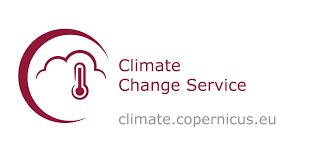The European heatwave of July 2023 in a longer-term context
Europe is experiencing some of the hottest temperatures of summer 2023 so far, as a ‘heat dome’ expands over the southern half of the continent. This weather pattern allows a warm air mass to build up under a high-pressure system, creating stable and dry conditions.
It is thought that Europe is currently experiencing the peak of this heatwave, with parts of Greece, eastern Spain, Sardinia, Sicily and southern Italy seeing temperatures above 45°C at the start of this week.
Contributing factors – high pressure and warm air transport
The current extreme heat is due to an anticyclone, a high-pressure system, that is dominating the upper atmosphere over southern Europe. As well as compressing and warming air, high-pressure systems are associated with reduced cloud cover, allowing more solar radiation to reach the ground. This allows for substantial heating of Earth’s surface by the sun, heat which then moves upwards into the atmosphere. The long days and short nights of summer mean that this heating effect is maximised.
Large scale winds, advection, blowing hot air for example from northern Africa into Europe, can also contribute to heatwaves. For the current heatwave this factor seems to be less important.
Atlantic Ocean heatwave
Another possible influence on Europe’s current weather is the Atlantic Ocean heatwave that was reported on by the Copernicus Climate Change Service (C3S*) in early July. During June, and into the start of July, the Atlantic Ocean has been warmer than average across most of its basins, especially near North America and Europe. While atmospheric circulation can affect the ocean, the opposite is also true. For example, ocean heatwaves can affect atmospheric circulation patterns and can also warm up the airmasses above them. Sea surface temperature anomalies in the eastern North Atlantic have reduced since the exceptional peak in June, but marine heatwaves continue in parts of the region.
Heat stress
If the heat dome isn’t disrupted, it is possible that Europe could face more episodes of extreme heat this summer unless a major shift occurs in the general atmospheric circulation.
Heat stress is the impact the environment has on the human body, accounting for temperature, humidity, wind speed and other factors. Data for summer 2023 up until 15 July show that large parts of southern Europe have already seen up to 10 days of ‘very strong heat stress’, and parts of southern Spain have experienced up to 30 days of ‘very strong heat stress’. Last year, southern Spain saw 50-60 days of very strong heat stress, and in some small areas, up to 70 days, over the whole summer. This region has already seen some days with ‘extreme heat stress’ so far this summer, and it is likely that the data will show that parts of southern Europe experienced ‘extreme heat stress’ during the most recent heatwave.
Across Europe, there is an upward trend in the number of days in summer during which the maximum heat stress falls within the categories of ‘strong’ and ‘very strong’. In southern Europe, there is also an increase in the number of days with ‘extreme heat stress’. Here, summer 2022 had the highest number of days with ‘very strong heat stress’ in a record that goes back to 1950.
“In the longer term, as the climate warms, Europe is seeing an increasing number of summer days with ‘very strong heat stress', and in southern Europe, an increasing number of days with ‘extreme heat stress’. A recent study in Nature Medicine indicated that more than 60,000 people in Europe lost their lives due to the extreme heatwaves last summer,” explained Carlo Buontempo, Director of C3S.
Wildfires
As well as affecting health, weather conditions have an impact on the likelihood of wildfires. During this heatwave, such conditions have mostly affected the Iberian Peninsula, Northern Morocco, and Algeria. There have been high nighttime temperatures in these regions, remaining above 22°C for most nights during this heatwave. Low relative humidity, with values below 20-10% in parts of southwestern Europe, has allowed for poor moisture recovery overnight.
The Fire Weather Index (FWI) is a meteorologically based index used worldwide to estimate fire danger. Values have been around 80, classified as ‘very extreme’ by the Copernicus Emergency Management Service. This follows a year with the second-largest wildfire burnt area on record, with over 900 000 ha estimated to have burnt across the EU countries in 2022.
Persistent drought and extreme temperatures throughout the summer months resulted in a substantial increase in the number of days with FWI above 50 in southwestern areas, classified as ‘extreme’ fire danger.
Long-term trends in temperatures
Temperatures for Europe as a whole show long-term warming trends for both annual and seasonal averages. The annual temperature for 2022 was the second warmest on record for Europe, and was 0.3°C cooler than 2020, the warmest year on record. The ten warmest years on record for Europe have all occurred since 2000, and the five warmest years have all occurred since 2014. Summer 2022 was the warmest on record, by a large margin, at 1.4°C above average.
The average temperature over European land was only a little warmer in the early 1980s than it had been a hundred years earlier but has risen sharply over the past forty or so years. The average value for the last five years is around 2.2°C higher than typical values for the latter half of the 19th century. This temperature increase for Europe is about 1°C larger than the corresponding increase for the globe as a whole. Europe has also warmed faster overall than any other continent in recent decades.
While the current heatwave is expected to last until around 26 July, another period of extreme temperatures may follow if the heat dome persists. C3S seasonal forecasts also predict that well-above-average temperatures are likely to continue across Europe until the end of summer, with the exception of southeastern parts of the continent where large uncertainty leaves the probability for extreme conditions close to average.
“C3S is monitoring the evolution of the season. June was the warmest on record for the globe as a whole, and the first 15 days of July have been the warmest 15 days on record. This means that the chance of having a record-breaking summer for the globe is not remote," said Carlo Buontempo. “Without a dedicated study we can’t say how much more likely the current heatwave has become as a consequence of climate change, but it could be seen as part of a global pattern. For instance, the Intergovernmental Panel on Climate Change stated that "every additional 0.5°C of global warming causes clearly discernible increases in the intensity and frequency of hot extremes, including heatwaves (very likely)".
ECMWF forecasts are updated four times a day and the latest can be found through the open charts website.
*C3S is implemented by the European Centre for Medium–Range Weather Forecasts with funding from the European Commission.






